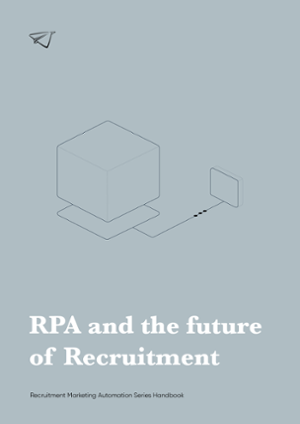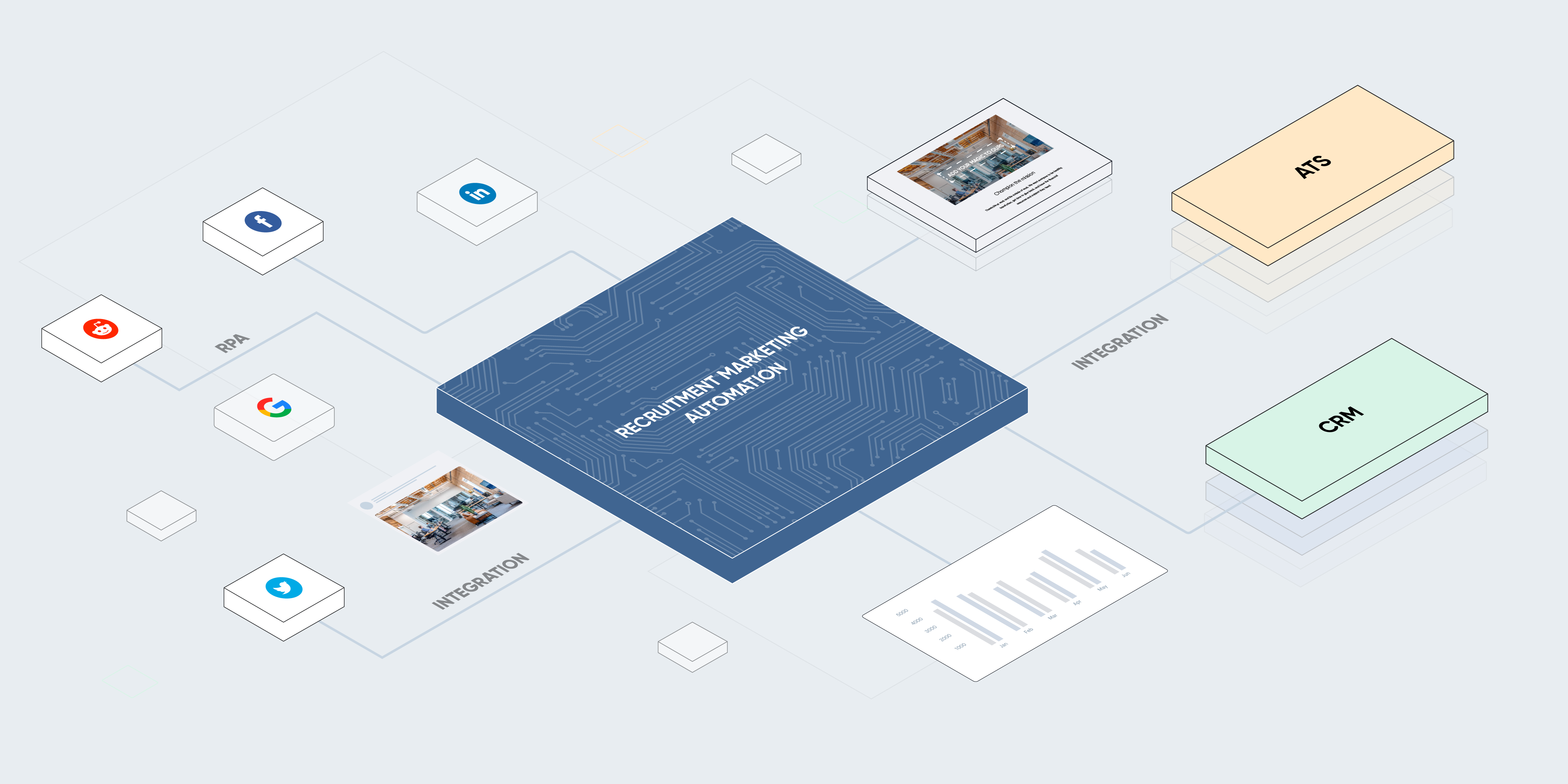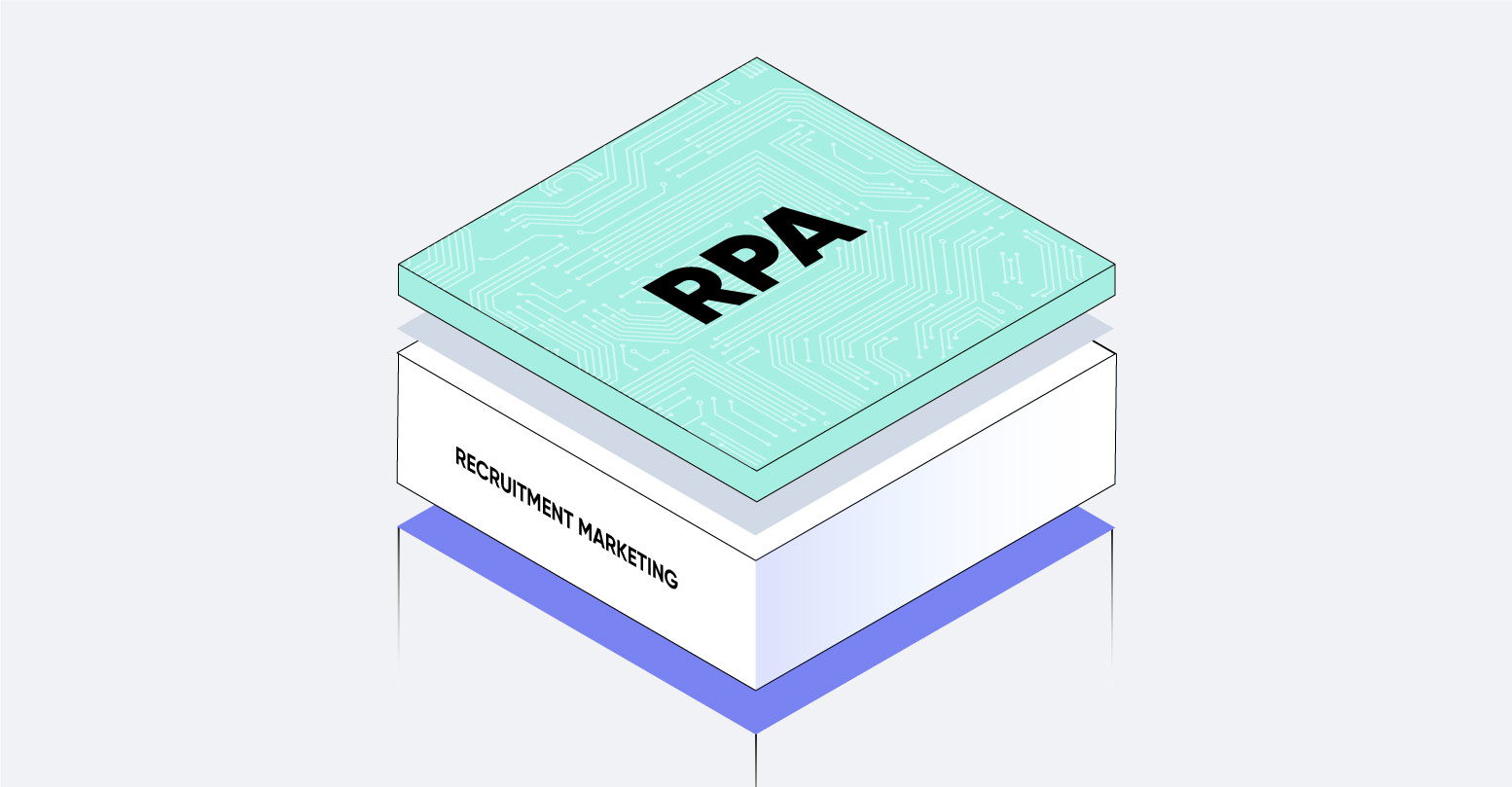New and emerging technologies have always played a big part in the way that companies recruit. The introduction of the telephone into wide business use changed the way recruiters found and interacted with talent. The birth of the internet did the same again. If we’re willing to get a little bit wonkier, the introduction of the first ATS into the HR tech market made quite a splash, offering recruiters new tools for tracking applications and developing relationships. At the present moment, technological change is playing just as big a role in recruitment as ever. And possibly the most impactful technology gaining traction on the market right now is RPA, or robotic process automation.
RPA, for the uninitiated, involves the automation of rote, repetitive tasks that would otherwise have to be performed by human laborers. Unlike AI or machine learning, these kinds of workflows can be implemented quickly and easily into most software environments. Considering how much of modern recruitment marketing centers around mass social media communications, it’s not hard to imagine the ways in which this kind of automation could save time—but its potential impacts on recruitment marketing are poised to go much further than that. Today, we’ll give an account of the ways that RPA stands to change talent acquisition, from the perspective of each stage of the recruitment marketing process: attract, engage, convert, and measure.
Attract
Because 80% of potential job applicants are not actively seeking new employment at any given time, the best way to spread your employer brand and get the attention of potential applicants is to ditch the job boards and head towards the social media and other niche sites where they spend their time. In this way, you catch people in a receptive mood, familiarize them with your company’s mission and values, and get them started on the eventual path to applying. This is the basis of recruitment marketing as a strategy, and in order to be truly effective, it requires large volumes of employer-branded content being put out on a regular basis. On platforms like Facebook, where you can easily schedule ads and paid posts in advance as needed, spreading your employer brand doesn’t have to be too time consuming. But on a site like Stack Exchange or Reddit—i.e. a site that doesn’t have a lot of built-in APIs or other functionality for this kind of use-case—things could be a bit more challenging.
This is where RPA comes in. Even where sites don’t have the kind of functionality that would make a robust employer branding campaign feasible from a time-management perspective, the RPA software-based bots could be used to automate the process anyway. Rather than humans getting up in the middle of the night to post content aimed at passive job seekers on a different continent, bots can do the job on their behalf, and they can do it at scale. After all, when you expand from one or two employer branding venues to dozens of them, the work-hours can begin to pile up pretty quickly. Not only does RPA in this instance save time when it comes to running candidate attraction campaigns, it makes larger and more robust campaigns suddenly more feasible.
Measure
Okay, we know, we’re going out of order. Trust us, there’s a reason. In the same way that sites without API integration can suddenly be used as easily as something like Facebook by implementing RPA bots, sites that don’t offer robust data reporting can be primed for convenient data collection through the same kind of process automation. As a recruiter, you want to know how your ad dollars are being spent and which channels are yielding the best results in terms of impressions, engagements, and applications submitted. If you can’t get this information from a small, niche site, it can be difficult to understand how it fits into your larger recruitment marketing activities.
With RPA, you can automate this process as well. Instead of flying blind and hoping that you’re getting the engagement numbers or the total impressions you want, you can use the bots to collect data and provide apples-to-apples metrics comparisons with sites like Facebook and Instagram that offer more robust built-in reporting functionality. All of a sudden, your recruitment advertising efforts are connected in a cohesive manner, end-to-end. Need to compare click rates for an ad that ran on Snapchat and Reddit? No problem! Looking to calculate a rough recruitment ROI for each individual channel, accounting for engagements and clicks? Done! In this way, RPA makes recruitment marketing smarter and more data driven—potentially leading to large upswings in effectiveness down the road.
Engage/Convert
Now, why did we leave engage and convert for last, given that they’re the middle steps of the funnel? Because they’re the steps that require the most creativity. Once you’ve familiarized someone with your employer brand and you really want to get them excited about working for your company, you need to put out thoughtful and engaging content that will get people moving through your funnel. Okay, but aren’t creative ideas exactly the kind of thing you don’t want to put a robot in charge of? Of course—but by automating the attract and measure stages in the way we discussed above, RPA gives so much time back to recruiters that they can concentrate their full creative efforts on the tasks that really require them. Instead of sitting at a computer posting things to Twitter and a dozen other channels for hours each day, recruiters can spend their time doing what they’re best at: coming up with creative ways to get job candidates excited about your company.
At the end of the day, this is the greatest impact that RPA will have on the world of recruitment marketing. By automating tasks that are rote and repetitive (though necessary), it will give recruiters the freedom to be strategic, engaging, creative, and a whole host of other things that humans like to be. You can leave robotic tasks to the robots and focus instead on learning more about your ideal candidates, talking to your existing team, and analyzing (rather than gathering) data to refine future campaigns. Paradoxically, RPA has the power to put real, human connections back at the forefront of HR and HR technology.









